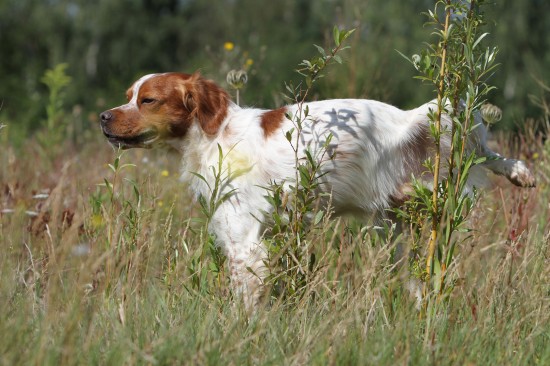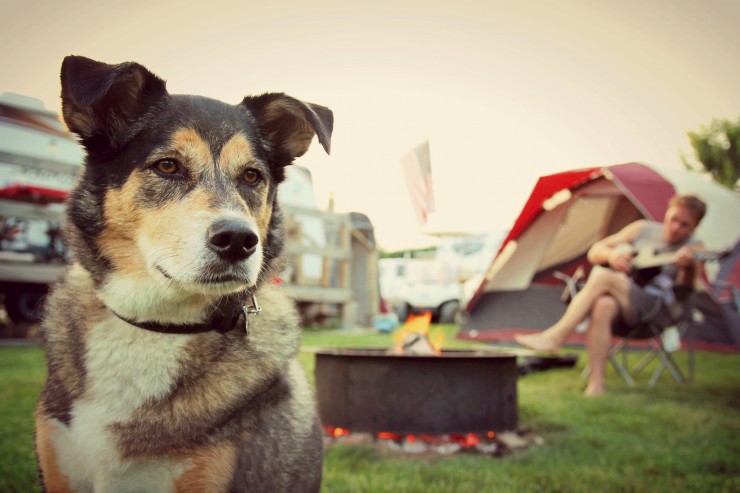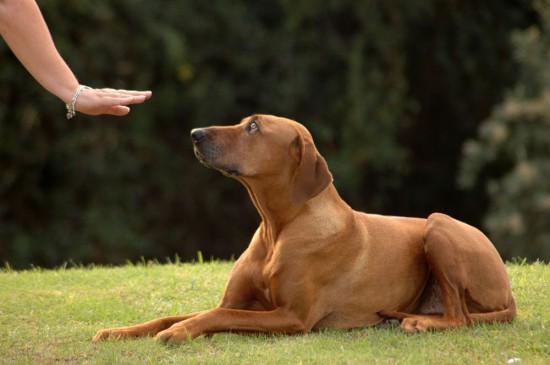
Dogs, just like humans, display a wide range of tolerance for others. Some are immediately friendly with every new dog, mouse or bird. Others are forever unfriendly to even the opposite sex of their own breed. Considering that dogs are by nature territorial, the diversity is odd, but there it is.
Naturally, animal lovers like to have more than one dog around and sometimes several breeds and other pets. Guaranteeing that furniture stays intact and bodies unscathed can be somewhat of a challenge. And don't forget about your neighbor's pets or nearby critters that wander into your dog's territory where your yard, not to mention your sanity, can be at a very real risk.
The initial step is to begin the process of socializing your dog as early as feasible. Just like young children, puppies are much more accepting of strangers. Since they haven't yet distinguished between friend and enemy, everything is a new experience to be explored rather than alarmed by or chased.
If you just have one dog, expose the puppy early on to other dogs and people. Get them comfortable with being touched, especially between the toes, in the ears and near the eyes. Along with impact on interaction with animals, that will make visits to the vet and outings a lot easier.
Dogs, typically, sniff everything. When they're about to interact with another, manage them until you are confident they won't chase or fight, and only then let them explore the other dog, cat or animal.
If the dog displays a tendency to jump or bite, put up with it to the point someone is going to get injured. It's normal for dogs to rough house, knock one another over and even lightly bite legs and necks. Stay nearby and be prepared to grab them, if necessary. Leather gloves may be useful during these first attempts.
If your dog continually barks, distract them with a treat, a toy or a sharp command. If they still refuse to stop pulling or barking after a few attempts at control, try another day. What works will differ widely depending on the individual dog and some will simply never put up with others (just like some humans we all know). You'll figure out over time what works and what doesn't as you observe your dog interacting with others.
It might be necessary to put the dog on its back, then hold it down with a firm hand on the chest. In more difficult cases a bark or shout into the face of the dog is helpful. Yes, you will look like a nut to others, but this technique is even employed by the Monks of New Skeet. The brothers of this upper New York State religious order are world-renown for their German Shepherd raising practices.
Rescued or animal shelter dogs usually need extra patience when socializing. These animals have often been abused by people or injured by other dogs. Those experiences naturally many times lead to aggression or fear. Remarkable transformations can take place even in these dogs, however. After continual exposure they often learn to at least tolerate other people and animals.
Start socializing early, expose for short intervals increasing to longer ones, repeat as needed. In each instance, be prepared to physically and mentally control the dog.
 Toxoplasma In Cats, Why It Is Important
Toxoplasma in Cats is pretty common and here I will exp
Toxoplasma In Cats, Why It Is Important
Toxoplasma in Cats is pretty common and here I will exp
 Dogs Communication Via Scent Marking
Dogs Communicatio
Dogs Communication Via Scent Marking
Dogs Communicatio
 Tips for Caring YourPet Better and Keeping Them Happy
Tips for Caring YourPet Better and Keeping Them Happy
Tips for Caring YourPet Better and Keeping Them Happy
Tips for Caring YourPet Better and Keeping Them Happy
 5 Brilliant Dog Friendly Camping Sites
5 Brilliant Dog F
5 Brilliant Dog Friendly Camping Sites
5 Brilliant Dog F
 Ten Tips For Finding A Good Canine Behaviourist
Ten Tips For Find
Ten Tips For Finding A Good Canine Behaviourist
Ten Tips For Find
Copyright © 2005-2016 Pet Information All Rights Reserved
Contact us: www162date@outlook.com